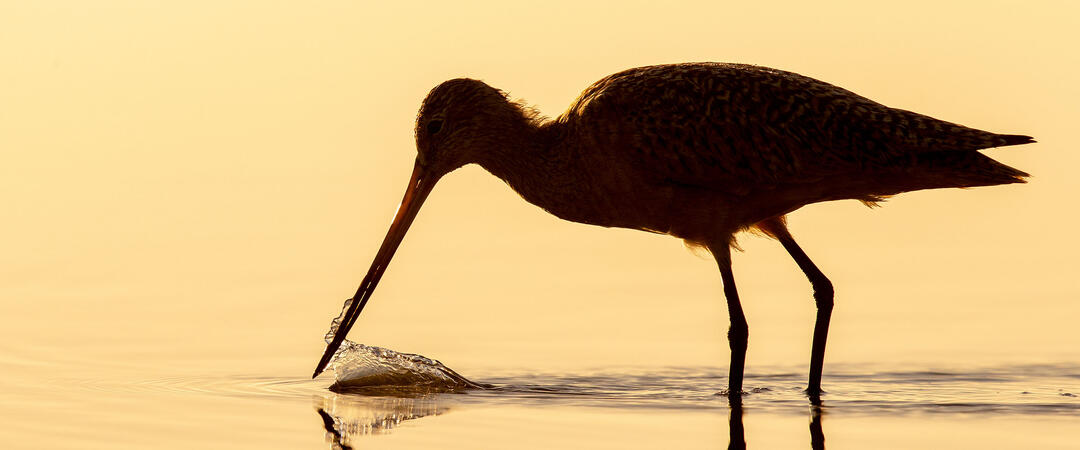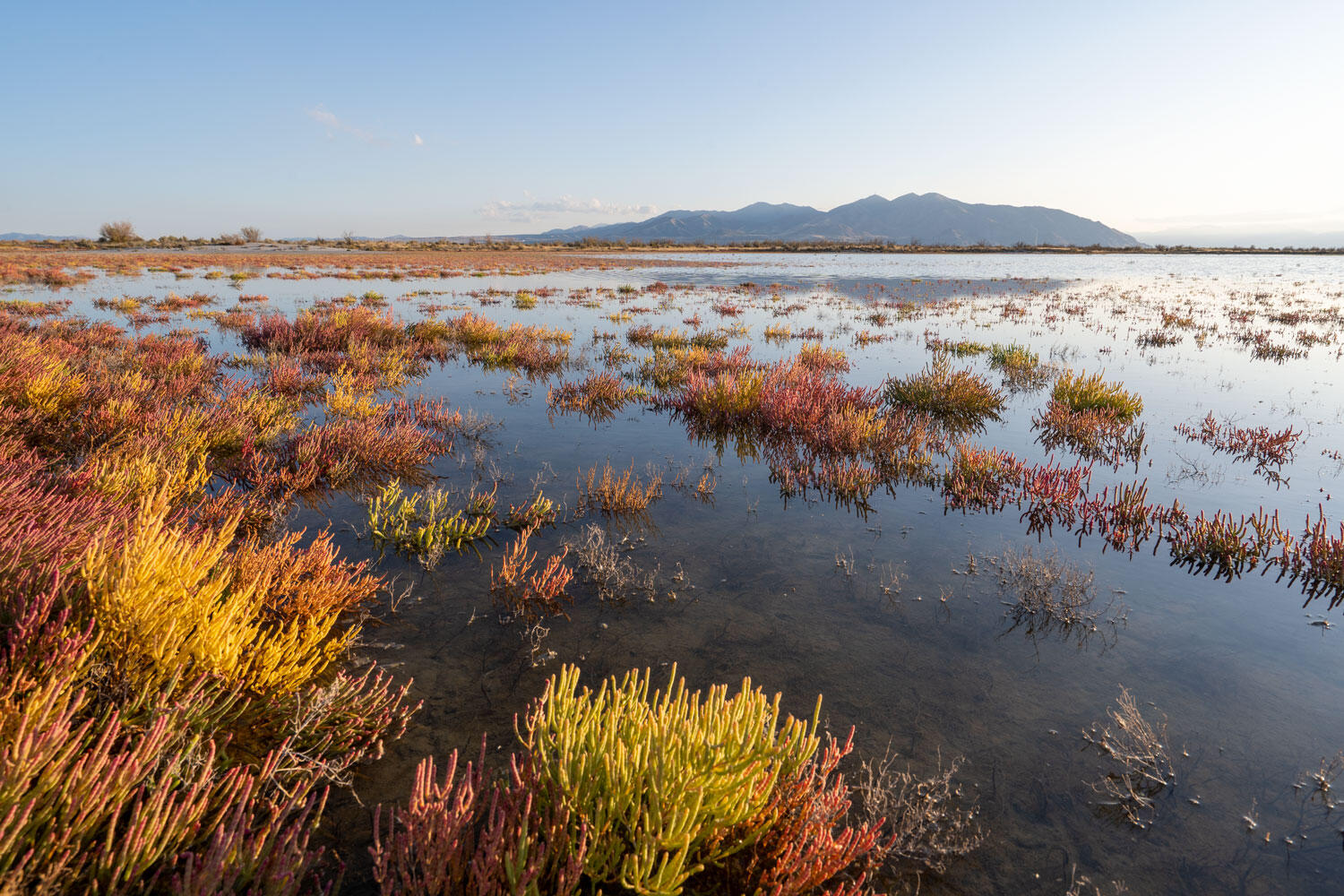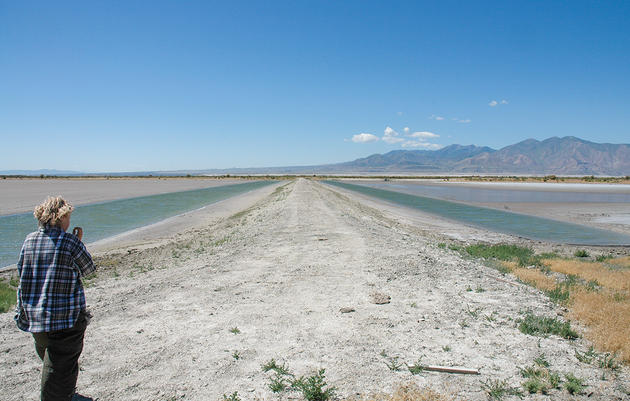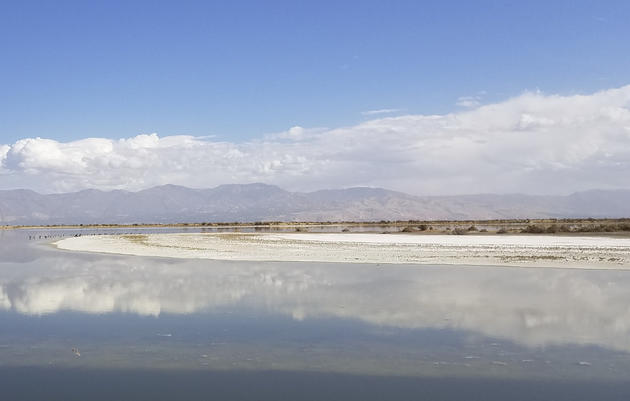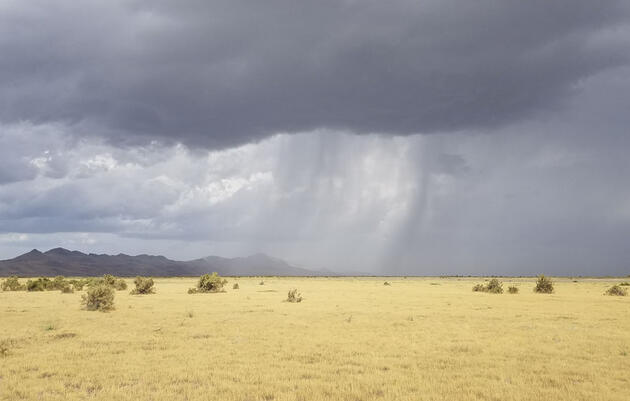Every year millions of shorebirds representing 42 species congregate on Great Salt Lake. Some shorebirds nest and rear young, but many more use the lake as a fueling stopover during migration. Some of these journeys last thousands of non-stop miles. It is one of the largest concentrations of shorebirds on Earth, and yet, compared to waterfowl and colonial nesting birds at Great Salt Lake, they have received relatively little attention.
This summer, Dr. Bonnie Baxter and Jaimi Butler, director and coordinator, respectively, of the Great Salt Lake Institute and chair of the biology department at Westminster College, published a definitive reference book about Great Salt Lake, titled Great Salt Lake Biology: A Terminal Lake in a Time of Change.
For the chapter on shorebirds, Dr. Baxter reached out to Ella Sorensen and Dr. Heidi Hoven, manager and assistant manager, respectively, of Audubon’s Gillmor Sanctuary on the shores of Great Salt Lake. Sorensen brings more than forty years of fascination, study, and advocacy for shorebirds and their habitats, and a deep knowledge of birds in the changing landscape of Great Salt Lake.
Dr. Hoven holds a PhD in natural resource management and has conducted more than 20 years of various research on Great Salt Lake wetland ecology, obtaining a broad understanding of the inter-relationships of habitat conditions and the flora and fauna that thrive in them.
John Neill, the third author, is an avian biologist working on the Great Salt Lake Ecosystem Program with the Utah Division of Wildlife Resources. Neill has spent years observing birds on the lake and his experience and knowledge of shorebirds and their habitats were invaluable.
According to Neill, “There hasn't been a comprehensive look at shorebirds specific to Great Salt Lake. Each species that has been to Great Salt Lake and has been accepted as an official record has a species account with details specific to Great Salt Lake. [The chapter] also discusses the habitats and food available to shorebirds and how habitat and food are driven by changes in lake level and salinity, which are intrinsic to a saline lake ecosystem.”
Except for a few species such as phalaropes and avocets, most shorebirds forage for macroinvertebrates in a variety of microhabitats in water depths from mud to 7 inches. Where they forage depends largely on body size, leg length, bill shape and length, and method of foraging. Deeper water prevents them from finding food, as most species forage with feet firmly on the ground.
Three ecological conditions determine whether or not any given location is suitable shorebird habitat: water depth, type and extent of vegetation, and type of food items available. Although shorebirds are opportunistic, each species has a preference for each of these conditions. In their chapter, the authors describe the preferences for specific shorebird habitats. They also explain how salinity influences vegetation and macroinvertebrates.
Playas and mudflats are important components of shorebird habitat, but the characteristics that define these features in the landscape have always been mired in confusion. The authors intensely researched playas and mudflats in order to clarify and define their role in the Great Salt Lake ecosystem. They also wrote species accounts for each of the 42 species of shorebirds, detailing status, abundance, timing of arrival and departure, and ecological preferences.
Shorebirds at Great Salt Lake have historically been underreported. According to Dr. Baxter, “This is literally the very first review of Great Salt Lake’s shorebirds, including data collected by the authors and the State of Utah that were previously unpublished.”
“[Sorensen’s] chapter underscores the subtitle of our book, ‘A Terminal Lake in a Time of Change,’” said Dr. Baxter. “She describes, through the lens of shorebirds, the perilous and urgent situation for Great Salt Lake. This ecosystem faces not only increased water diversions, but also the desiccating effects of climate change, and [Sorensen] and co-authors have put this front and center in their writing.”
“This review is also critical because of the timing,” said Dr. Baxter. “The trajectory of the lake elevation is down. A shrinking lake could be devastating for the wetlands and shorebirds.” Great Salt Lake is under threat from a multitude of forces, some a consequence of a warming planet, and some stemming from development and industry.
Speaking on behalf of the co-authors, Sorensen said, "It is our hope that the information included in this chapter will dispel some of the misinformation on shorebirds and their habitats, fill many of the gaps in information, and that a greater understanding and appreciation of shorebirds and their habitats will lead to a better conservation ethic for the millions of shorebirds dependent on a healthy Great Salt Lake for survival."


